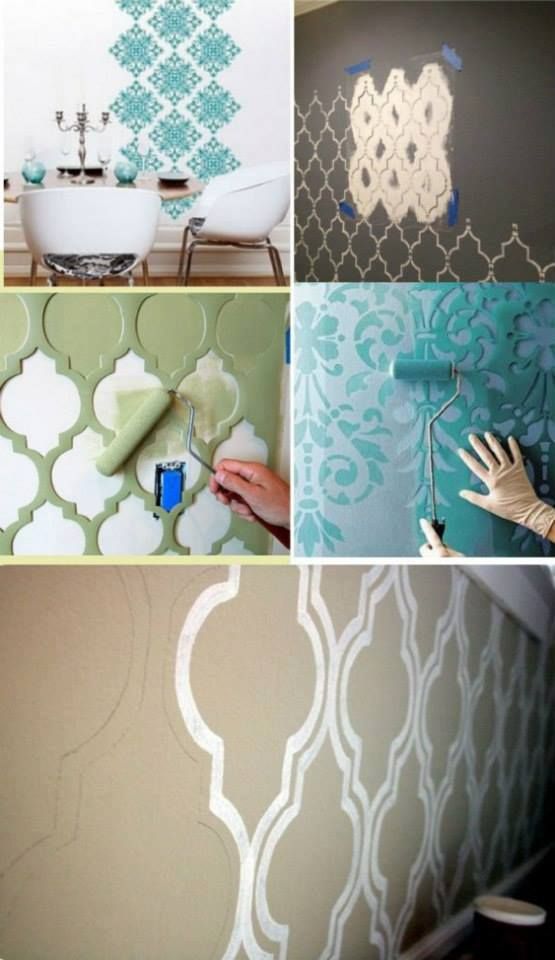Decorating walls with paint can completely change the feel of a room. In this article, we will delve into various techniques, styles, and personal experiences that highlight the beauty and versatility of painted walls.
The Power of Painted Walls
When I first moved into my apartment, the walls were a dull white. It felt lifeless and uninspiring. Painting the walls was the easiest way to breathe life into the space, and I quickly learned that the color and technique you choose can dramatically affect the room’s ambiance.
Painted walls can create cozy corners, energize a workspace, or make a statement in a living area. Let’s explore how to effectively use paint to achieve these effects.
Choosing the Right Paint
Types of Paint Finishes
Before diving into color selection, it’s crucial to understand the various finishes available:
| Finish Type | Characteristics | Best Use |
|---|---|---|
| Matte | Non-reflective, soft look | Low-traffic areas, ceilings |
| Eggshell | Slight sheen, washable | Living rooms, bedrooms |
| Satin | Soft sheen, durable | Kitchens, bathrooms |
| Gloss | Highly reflective, hard to apply | Trims, accents |
Color Psychology
The colors you choose can evoke emotions and affect mood. Here are some insights:
- Blue: Calming and serene
- Yellow: Cheerful and energizing
- Green: Refreshing and balanced
- Red: Passionate and stimulating
In my bedroom, I opted for a soft blue, which has been incredibly soothing after a long day.
Creative Techniques for Wall Painting
Accent Walls
Creating an accent wall is a simple yet effective method to add depth to a room. I painted one wall in my living room a rich navy blue. This technique not only draws the eye but also makes the space feel larger.
Ombre Effect
The ombre technique can add a unique flair. Gradually blending colors creates a beautiful transition that can be used on any wall. It took me a weekend to master this technique, but the result was stunning.
Geometric Patterns
Geometric patterns bring a modern touch to wall décor. Using painter’s tape, I created a diamond pattern, alternating between two colors. The finished look was a playful yet sophisticated addition to my office.

Stenciling
Stencils allow for intricate designs without the need for a steady hand. I used a floral stencil to create a border around my dining room, which added a charming touch without overwhelming the space.
Preparing Your Walls for Painting
Cleaning and Repairing
Before painting, it’s essential to clean and repair any imperfections. I made sure to patch up small holes and wash the walls to remove any dust or grease. This prep work pays off in a smoother finish.

Priming
Using a primer is vital, especially if you are making a drastic color change. It helps the paint adhere better and can prevent the need for multiple coats.
Tips for a Flawless Finish
Invest in Quality Tools
Good brushes and rollers can make all the difference. I learned the hard way, using cheap tools resulted in an uneven finish. Investing in quality products is worth it!

Technique Matters
Using the right painting technique can enhance the final look. I use a “W” pattern when painting with a roller to ensure even coverage.
Keep It Ventilated
Ventilation is crucial when painting, especially with strong-smelling paints. I always open windows and use fans to keep the air flowing.

Maintenance of Painted Walls
Regular Cleaning
To keep your walls looking fresh, regular cleaning is essential. I usually wipe down my walls with a damp cloth every few months to remove fingerprints and dust.
Touch-Ups
It’s common for walls to get scuffed. Having a small can of leftover paint for touch-ups can extend the life of your painted walls substantially.

Pros and Cons of Painted Walls
Pros
- Endless design possibilities
- Cost-effective transformation
- Ability to change with trends
- Easy to maintain and clean
Cons
- Time-consuming prep and application
- Potentially messy if not careful
- Fading with time, depending on the paint quality
- Requires periodic maintenance

FAQs About Painted Walls
1. What type of paint is best for interior walls?
The best type of paint for interior walls generally depends on the room’s function. For high-traffic areas, a durable satin or eggshell finish is recommended.
2. How can I remove old paint from walls?
To remove old paint, you can use a paint stripper, heat gun, or sandpaper, depending on the wall’s condition and the type of paint used.

3. How often should I repaint my walls?
Repainting walls every 5-7 years is generally a good rule of thumb, but this can vary based on factors like wear and tear and color choice.
4. Can I paint over wallpaper?
While it is possible to paint over wallpaper, it’s advisable to remove it first to ensure a smooth finish and prevent peeling.